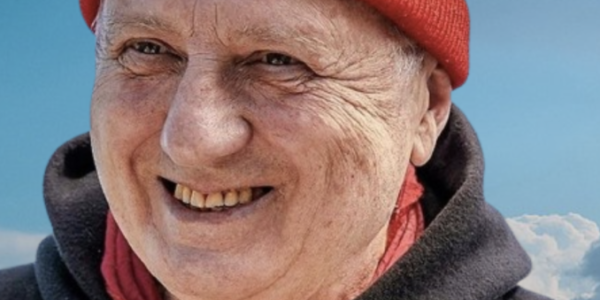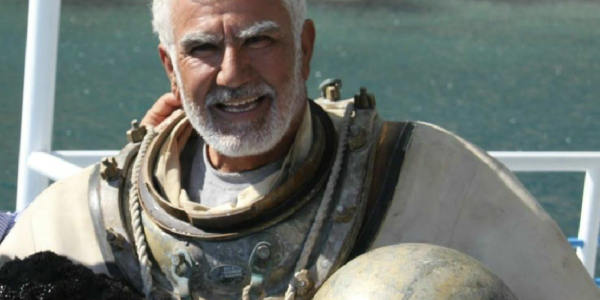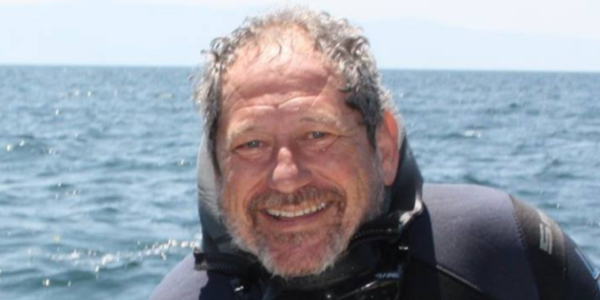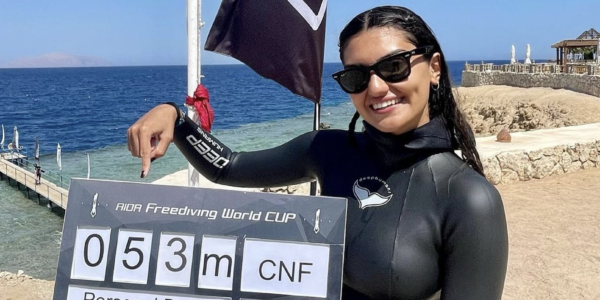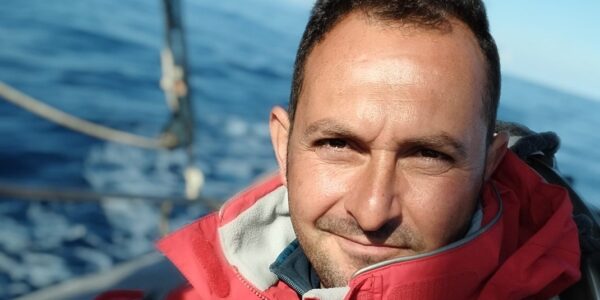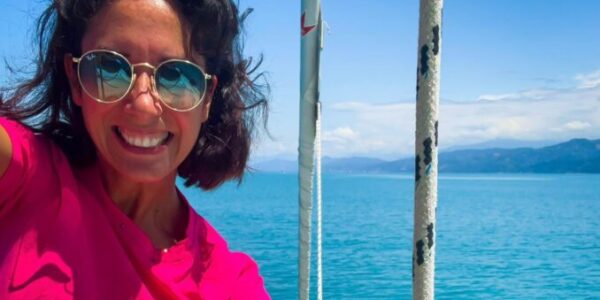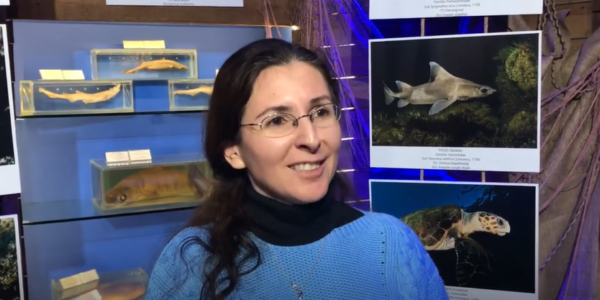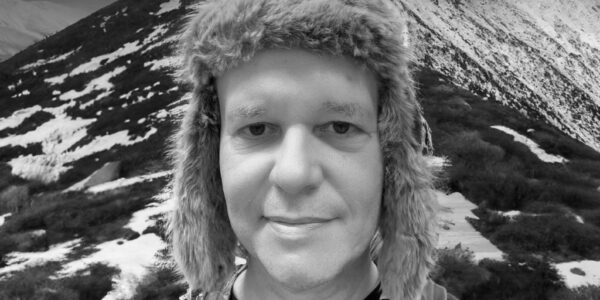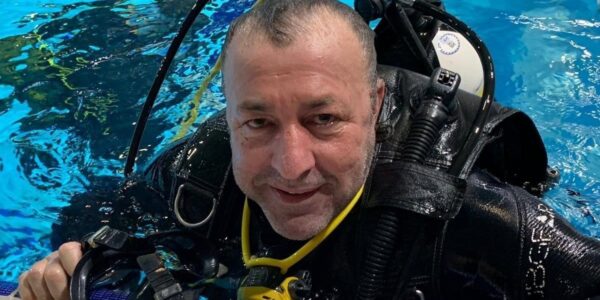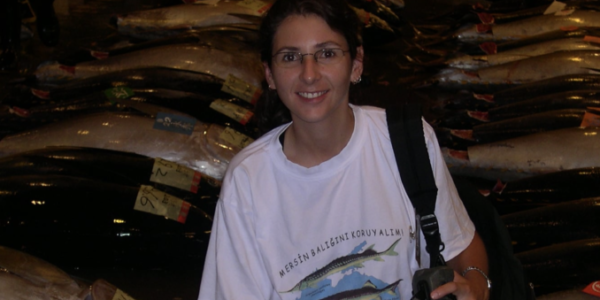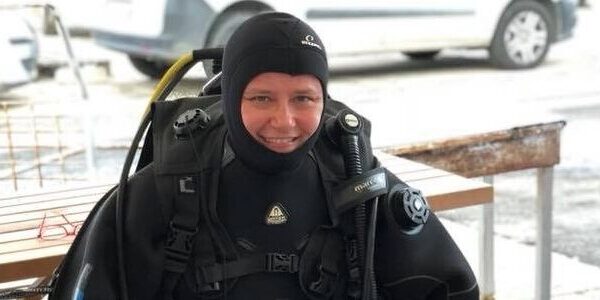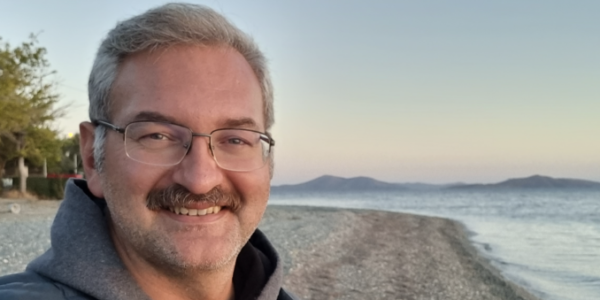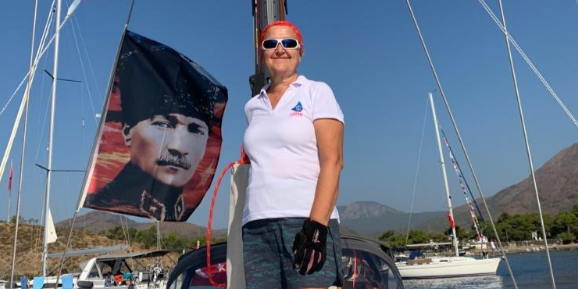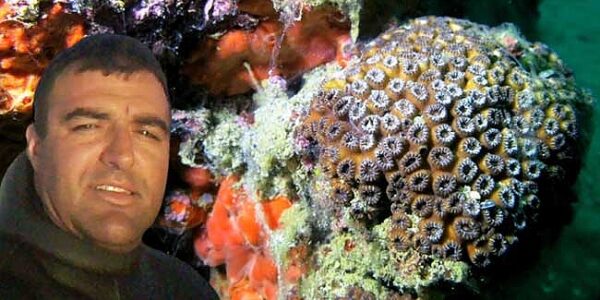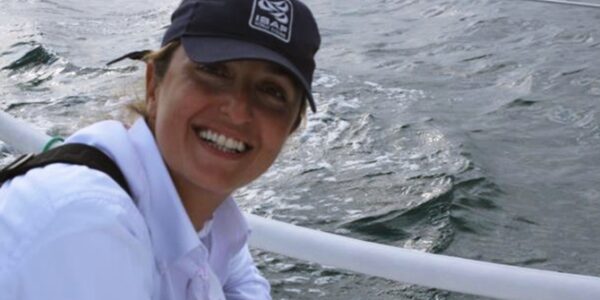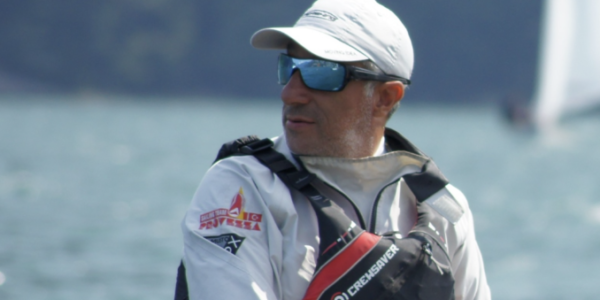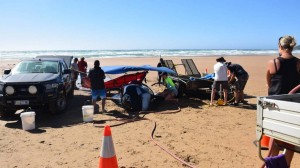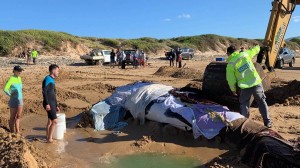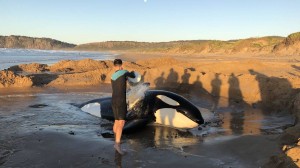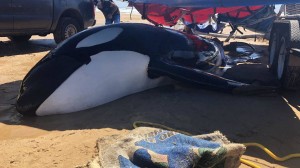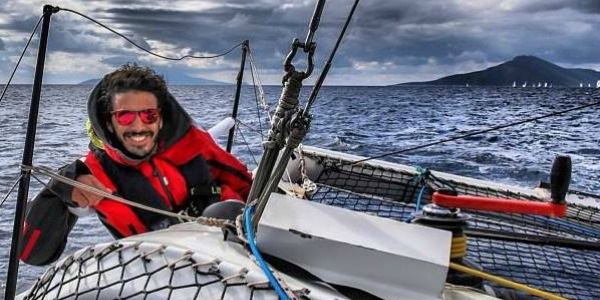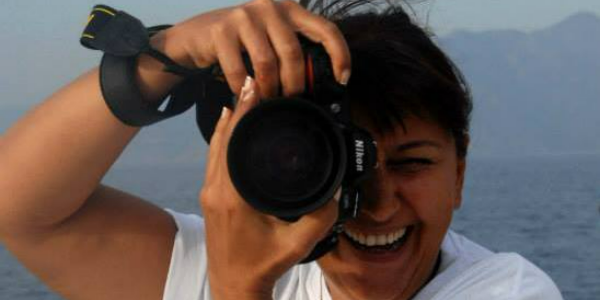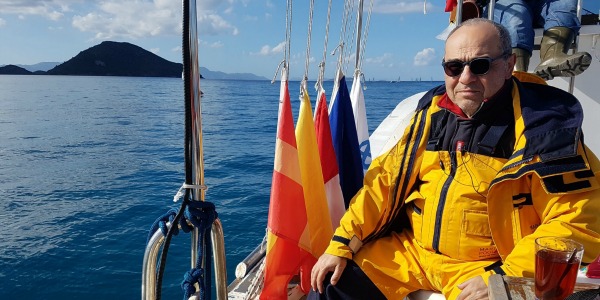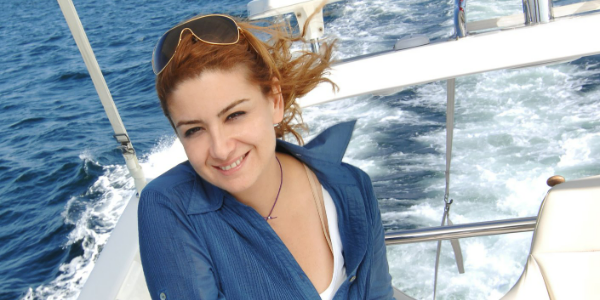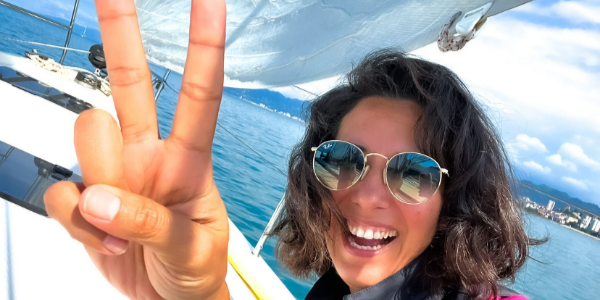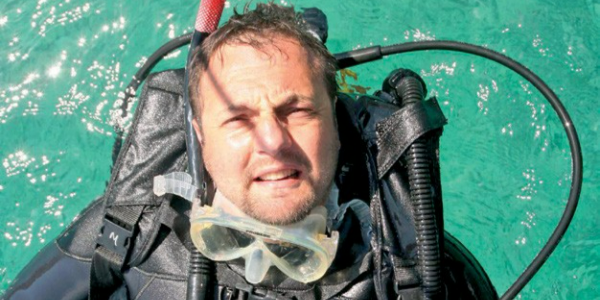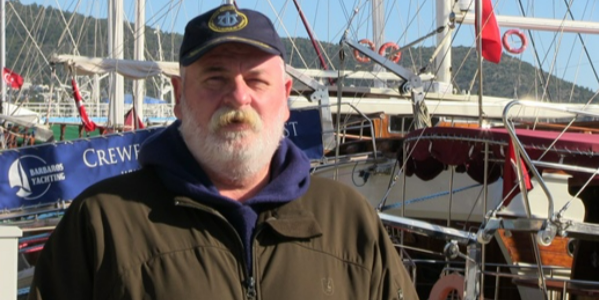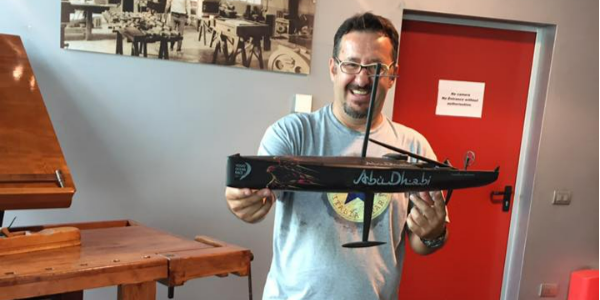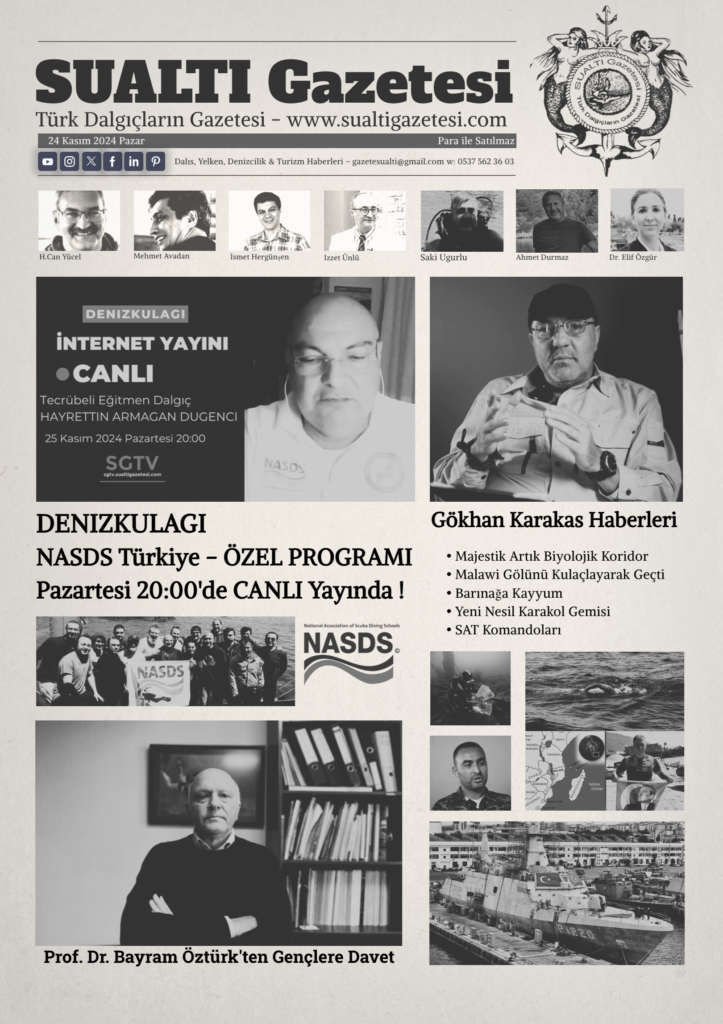A volunteer involved in rescue efforts for a large killer whale which became stranded, and later died, at a beach in Tasmania’s North on Saturday has praised the work of park rangers and others who came to the animal’s aide.
Ellen Bodell and her partner, Dana Young, were almost two-and-a-half hours away on the East Coast when they received a call from Mr Young’s uncle – a Parks and Wildlife Service ranger – about the large male killer whale stranded on Badger Beach.
“We were actually halfway up St Patrick’s Head, we were about halfway through doing a hike,” Ms Bodell told The Examiner by phone.
“But we turned around and came back to help out.”
When the pair arrived about 2pm on Saturday, the tide was still “way out” and wasn’t set to peak again until close to 11pm.
“They had him under tarps by that point, so it was just a matter of having the hose on him at all times and carting buckets of water up to keep him cool and wet,” she recalled.
Although killer whales are often sighted in Tasmanian waters, only five have been reported stranded in the past 20 years, according to a DPIPWE spokesperson.
In August 2017 a pod was spotted about 50 metres from the Bell Bay Wharf. In November 2016, fisherman Jeremy Jackson observed them in the river between George Town and Low Head.
As the group of DPIPWE staff and volunteers maintained the whale’s condition on Saturday, an excavator was brought in to dig a channel to give it access to deeper water as the tide rose.
“All of a sudden in surges it was coming through,” Ms Bodell continued.
“We were there until about 10 o’clock, by that time the rangers were in the water trying to push it. The moon was up, the sun was down, and they were just trying to get it going.
“But that was the last we saw of it.
“They were really great the [Parks and Wildlife Service] officers. We were so impressed by how organised and how respectful the parks rangers were.”
Dr Rachel Alderman, DPIPWE wildlife management branch manager, said in a statement on Sunday morning the team had worked all day and into the night on Saturday to rescue the whale and investigations would continue into why it became stranded and died.
“The reason whales and dolphins strand are varied and often cannot be determined, however accidental stranding in shallow waters such as these while pursuing prey is a possibility or perhaps some underlying health issue,” Dr Alderman said.
“I thank everyone for their help and hard work, including the member of public who reported the whale and the dedicated volunteers and staff who worked so hard to provide a rapid response and critical care for the animal.”
Members of the public who see any stranded or entangled whales around Tasmania were reminded to report them to the DPIPWE whale hotline 0427 WHALES.
DPIPWE staff were considering options, a spokesperson said, though it was likely the whale would be buried after marine biologists had finished examining it.
When Ms Bodell and Mr Young received a second call from his uncle again on Sunday morning, they were shocked to learn the animal, which weighed several tonnes, had died. They hadn’t even considered the possibility it might not make it.
“We were so close to it all day. You were right up there making sure it was watered and staying out of the sun,” Ms Bodell said.
“It’s crazy to think that something so powerful could get stuck there and not turn itself around.
“It had its eyes open a lot of the time and you just felt like it was looking at you.”
Source: examiner


